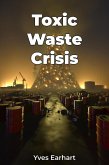Through detailed case studies of major processing regions like Ghana's Agbogbloshie and China's Guiyu, the book offers readers a ground-level view of how digital consumption patterns affect communities and ecosystems worldwide. The narrative weaves together extensive research from leading organizations, including the United Nations Environment Programme and World Health Organization, to document the movement of hazardous materials across borders and their effects on public health.
The book uniquely combines technical analysis of chemical contamination with real-world implications, featuring original interviews with recycling facility operators and environmental scientists. This approach makes complex scientific concepts accessible while maintaining academic rigor, making it valuable for both specialists and general readers interested in environmental sustainability.
Moving from problem identification to solution-finding, the text progresses through chapters examining the chemical composition of electronics, current recycling practices, and emerging approaches in sustainable design. The book concludes by offering practical guidelines for responsible electronics disposal and policy frameworks for improved waste management, emphasizing the crucial role of circular economy principles in addressing this global challenge.
Throughout, readers gain a clear understanding of how e-waste management intersects with international trade, environmental justice, and public health, making this an essential resource for anyone concerned about the environmental impact of our digital age.
Dieser Download kann aus rechtlichen Gründen nur mit Rechnungsadresse in A, B, BG, CY, CZ, D, DK, EW, E, FIN, F, GR, H, IRL, I, LT, L, LR, M, NL, PL, P, R, S, SLO, SK ausgeliefert werden.









